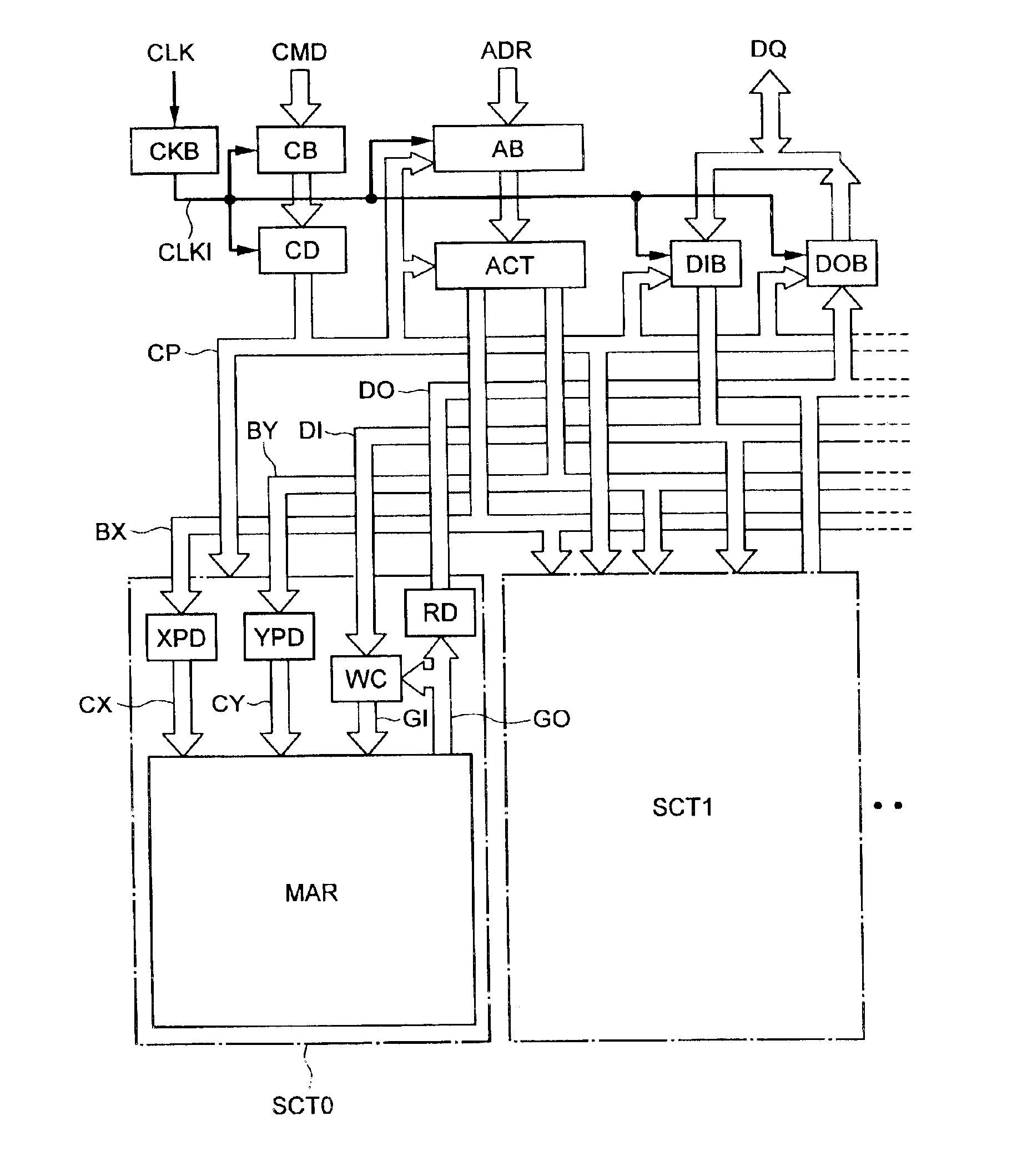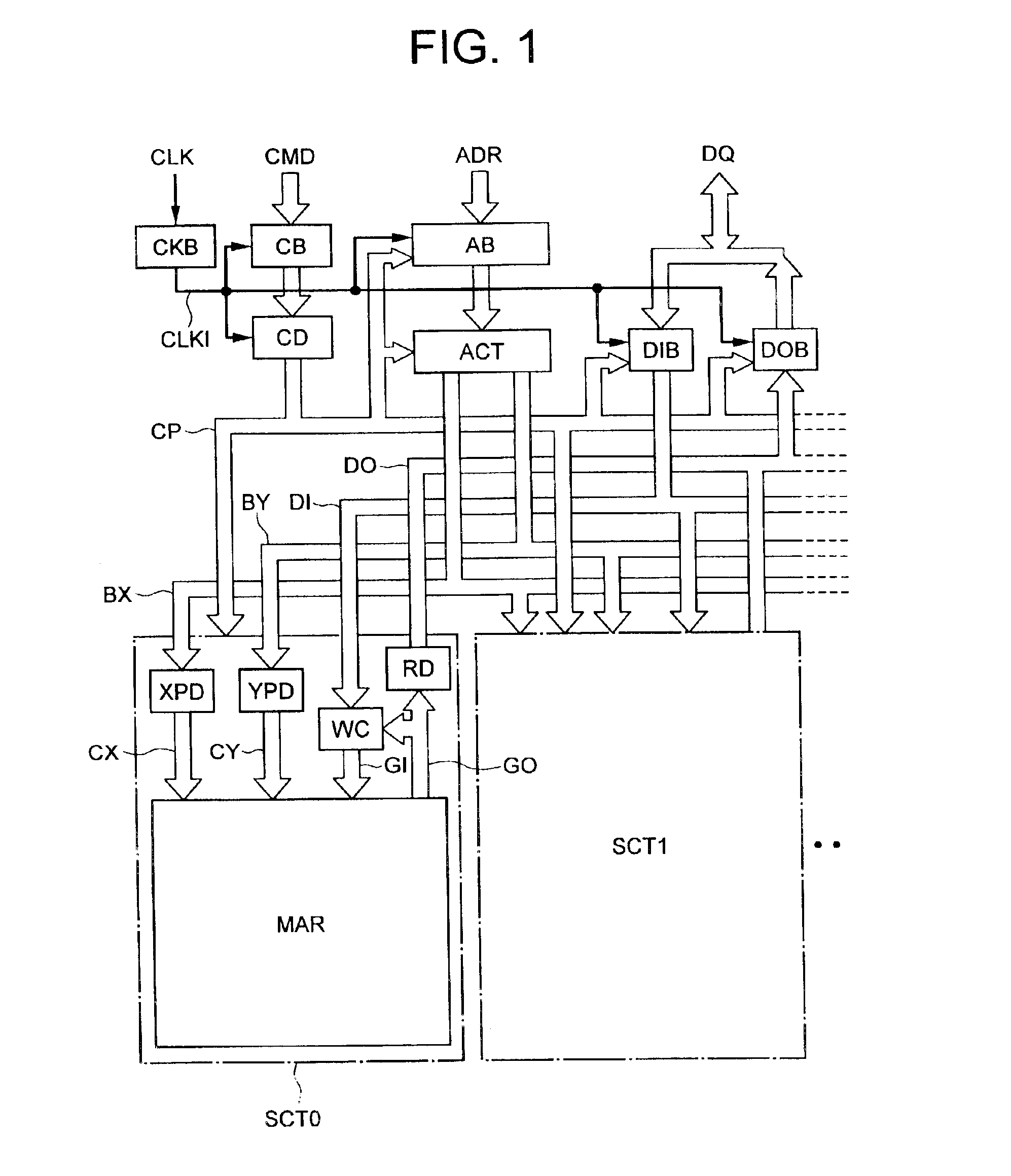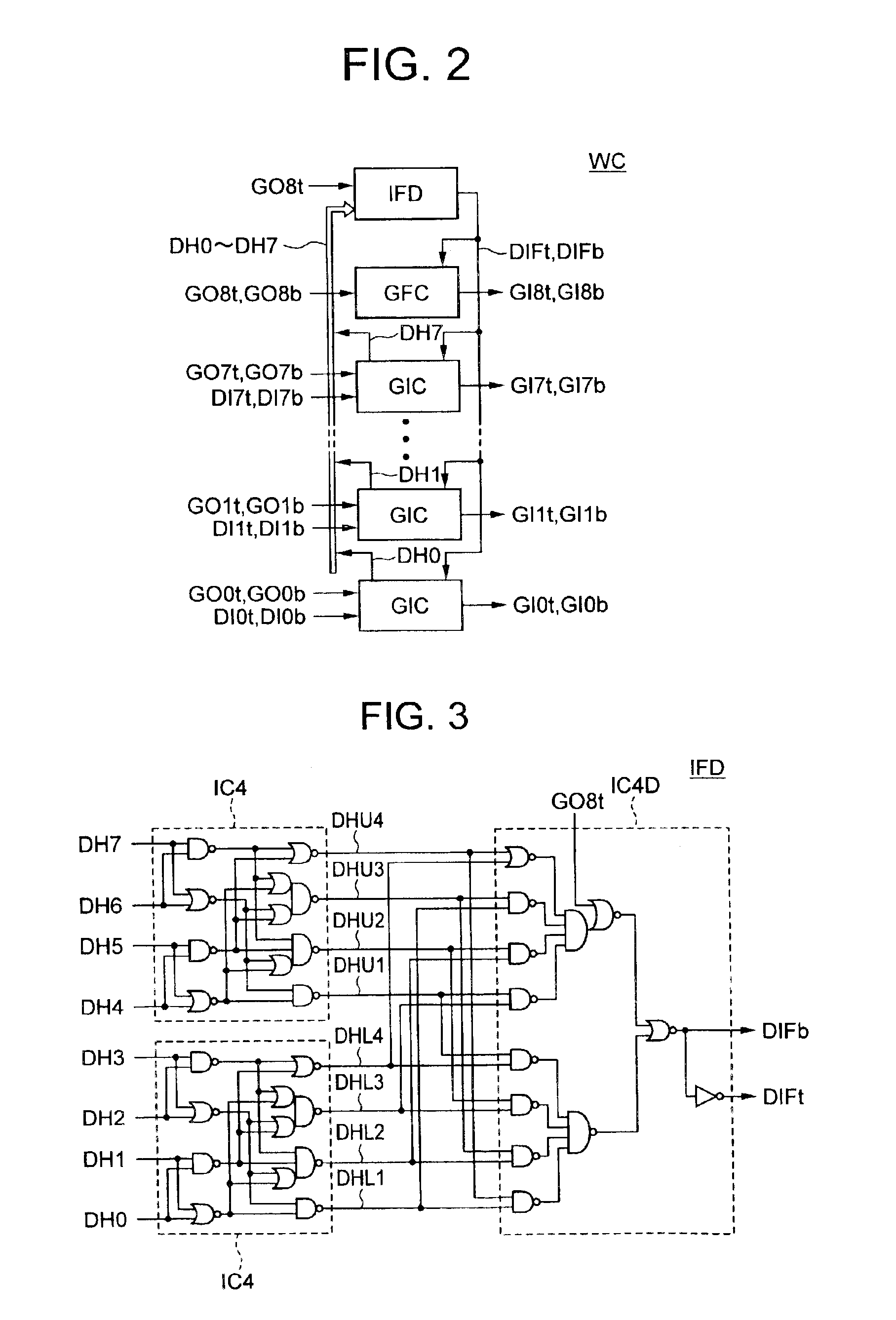Semiconductor device which is low in power and high in speed and is highly integrated
a semiconductor device and high-speed technology, applied in semiconductor devices, digital storage, instruments, etc., can solve the problems of large current required for writing, phase change memory also has a large current, etc., and achieve low power at a write time, high integration, and small current consumption
- Summary
- Abstract
- Description
- Claims
- Application Information
AI Technical Summary
Benefits of technology
Problems solved by technology
Method used
Image
Examples
first embodiment
(First Embodiment)
FIG. 1 is a main part block diagram of a memory according to the present invention. A first embodiment is characterized in that a data encoder WC and data decoder RD are disposed. Here, the constitution example of a synchronous memory is shown. The example includes a clock buffer CKB, command buffer CB, command decoder CD, address buffer AB, address counter ACT, input buffer DIB, and output buffer DOB. Furthermore, sectors SCT0, SCT1, . . . including memory arrays MAR are disposed. The sector is disposed for each bank, but the bank may include a plurality of sectors. The sector further includes a row pre-decoder XPD, column pre-decoder YPD, data encoder WC, and data decoder RD.
Each circuit block has the following function. The clock buffer CKB distributes an external clock CLK as an internal clock CLKI to the command decoder CD. The command decoder CD generates a control signal CP for controlling the address buffer AB, column address counter YCT, input buffer DIB, ...
second embodiment
(Second Embodiment)
The method of reducing the number of written bits as described in the first embodiment is effective not only for the MRAM but also for the phase change memory. The phase change memory to which the present invention is applied can be constituted in the same manner as in the MRAM in FIG. 1, and data encoder and decoder shown in FIGS. 2 to 7 can be used. FIG. 17 shows the constitution example of the memory array. The constitution is used as the memory array MAR in FIG. 1. The constitution includes a memory cell array OCA, row decoder XDEC, word driver group WD, and data line control circuit CCO. Here, in the same manner as in FIG. 8, for the sake of simplicity, a dummy cell for generating a reference signal is omitted. Moreover, this constitution may be repeated to form the memory array MAR of FIG. 1 depending on the memory capacity. The memory cell array OCA includes memory cells OC disposed in the intersections of word lines WL0, WL1, WL2, WL3, . . . with data line...
third embodiment
(Third Embodiment)
Next, an embodiment in which the coding is not used will be described with respect to the MRAM. FIG. 21 shows another constitution example of the memory array of the MRAM. For example, the whole MRAM is constituted by removing the data encoder WC and data decoder RD from FIG. 1. This memory array constitution includes the memory cell array MCA, row decoder XDEC, word driver group WDP, and data line control circuits CCN2, CCF2. The memory cell array MCA is constituted as shown in FIG. 8, although the number of data lines differs. The row decoder XDEC and word driver group WDP operate in the same manner as in FIG. 8.
The data line control circuit CCN2 includes a column selector YSN, and a plurality of read / write circuits RWN for the read data GO0, GO1, . . . Here, for the sake of simplicity, the column decoders are omitted. The column selector YSN is constituted in the same manner as in the column selector YSN3 in FIG. 9, and connects the desired data line to the comm...
PUM
 Login to View More
Login to View More Abstract
Description
Claims
Application Information
 Login to View More
Login to View More - R&D
- Intellectual Property
- Life Sciences
- Materials
- Tech Scout
- Unparalleled Data Quality
- Higher Quality Content
- 60% Fewer Hallucinations
Browse by: Latest US Patents, China's latest patents, Technical Efficacy Thesaurus, Application Domain, Technology Topic, Popular Technical Reports.
© 2025 PatSnap. All rights reserved.Legal|Privacy policy|Modern Slavery Act Transparency Statement|Sitemap|About US| Contact US: help@patsnap.com



